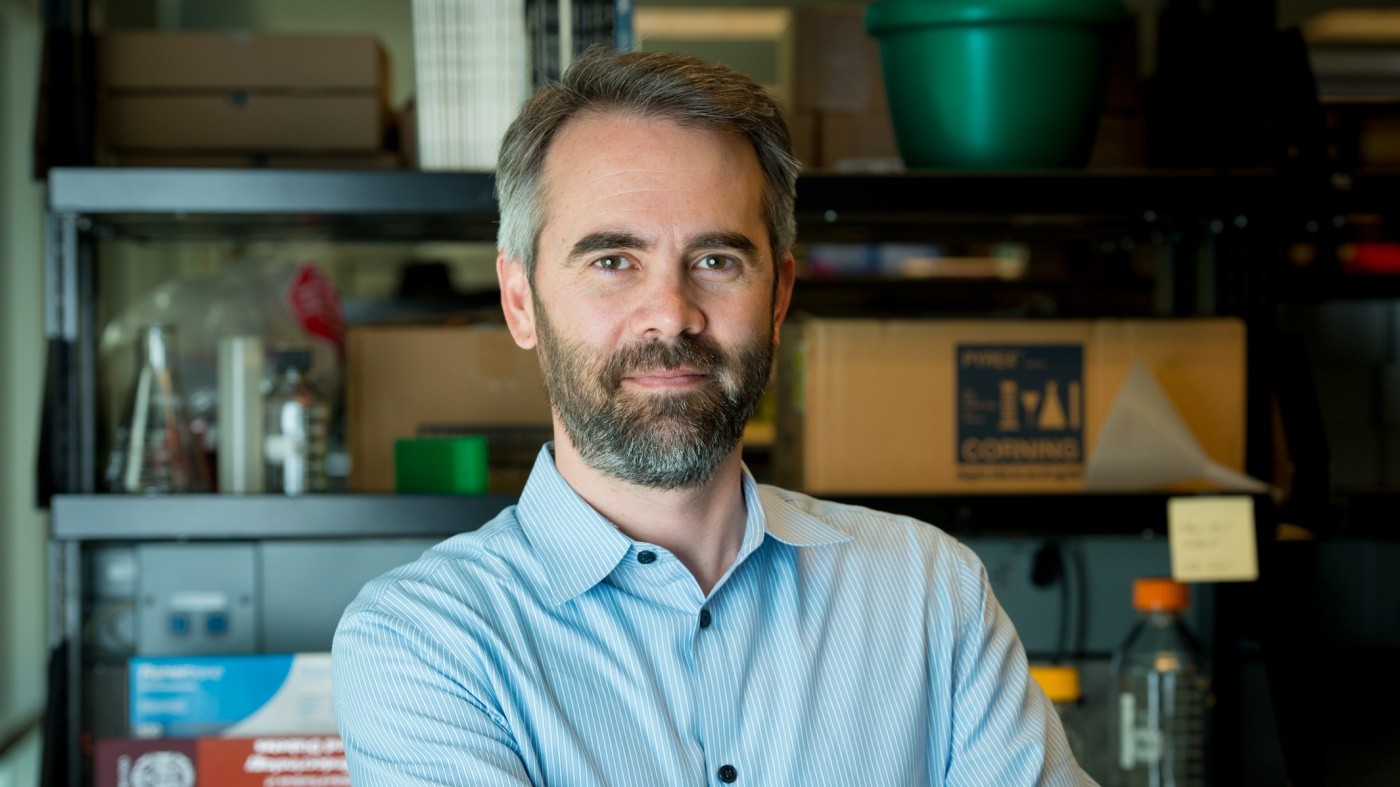Gladstone NOW: The Campaign Join Us on the Journey✕

Alex Pico, PhD, interim director of the Bioinformatics Core, reported remarkable growth in WikiPathways, a homegrown Gladstone technology. [Photo: Chris Goodfellow, Gladstone Institutes]
Scientists at the Gladstone Institutes recently reported tremendous growth in the content and features of WikiPathways, an open, collaborative platform that captures and disseminates models of biological pathways for data visualization and analysis. In their report, published in Nucleic Acids Research, they discussed new developments in the diversity and depth of pathways within WikiPathways from the perspective of researchers interested in using pathway information in their studies.
WikiPathways was first conceived in 2007 by Bruce Conklin, MD, senior investigator at Gladstone, and Alex Pico, PhD, interim director of the Bioinformatics Core at Gladstone. Since it was launched in 2008, it has grown to be a valuable resource for scientists across the globe.
“This is a major milestone for a homegrown Gladstone technology,” said Pico. “In the beginning, we described this project as an experiment to see if we could foster a community of researchers to contribute and maintain a knowledge base of world-class pathway models. We are thrilled to see how this project has grown.”
WikiPathways is structured as an open-access, open-source repository that accepts any pathway that researchers find useful in their work. It started out containing 500 pathways across six species, and it was maintained by just four individuals. Today, it contains over 2300 pathways across over 25 different species that were contributed by a diverse community of individuals. The human pathway collection is the largest and most active—it has increased sixfold to include 640 pathways.
“Hundreds of people contribute their time and domain knowledge to upholding the quantity, quality, and diversity of content in WikiPathways,” shared Conklin. “This effort creates a global level of collaboration that simply cannot be matched by institutional teams.”
In the report, the scientists provided updates of WikiPathways that are relevant to a wide spectrum of researchers, from bench biologists to computational scientists. They discussed the most recent additions to the breadth and depth of content at WikiPathways, including website and software updates that make this content easy to find and use in data analysis and visualization. They also highlighted new tools that help pathway contributors to publish and maintain pathways and to customize them in ways that organize communities of researchers with shared interests in specific pathway models. Furthermore, they summarized some of the latest updates for data scientists and programmers interested in new data formats and web service methods, such as PathVisio and Cytoscape, and ways to generate publishable figures with the data.
“We will continue to build tools and resources to support WikiPathways and the scientists who rely on it,” said Pico. “We are committed to capturing and openly sharing any and every pathway of interest with the scientific community.”
Support Discovery Science
Your gift to Gladstone will allow our researchers to pursue high-quality science, focus on disease, and train the next generation of scientific thought leaders.
Science in Seconds | Researchers Pinpoint Key Gene Behind Heart Defects in Down Syndrome
Science in Seconds | Researchers Pinpoint Key Gene Behind Heart Defects in Down Syndrome
In this video, Gladstone scientists share how they used stem cells, gene editing, and AI to identify a gene driving heart defects in Down syndrome—and how reducing its levels in mice restored normal heart development, offering hope for future treatments
Gladstone Experts Cardiovascular Disease Data Science and Biotechnology Pollard Lab Srivastava Lab AI Big Data CRISPR/Gene Editing Human Genetics Stem Cells/iPSCsScience in Seconds | The Thinking Microscope: Research Powered by an AI Brain
Science in Seconds | The Thinking Microscope: Research Powered by an AI Brain
In this video, Steve Finkbeiner and Jeremy Linsley showcase Gladstone’s groundbreaking “thinking microscope”—an AI-powered system that can design, conduct, and analyze experiments autonomously to uncover new insights into diseases like Alzheimer’s, Parkinson’s, and ALS.
Gladstone Experts ALS Alzheimer’s Disease Parkinson’s Disease Neurological Disease Finkbeiner Lab AI Big DataFrom Chaos to Clarity: New Tool Finds Connections in Complex Cell Data
From Chaos to Clarity: New Tool Finds Connections in Complex Cell Data
A powerful computation tool integrates different forms of biological data to reveal how cell types are related across tissues, experiments, and species—information that’s crucial for understanding disease.
News Release Research (Publication) Data Science and Biotechnology Pollard Lab AI Big Data



